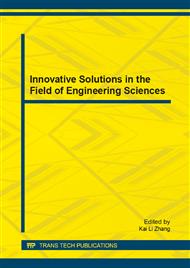p.878
p.883
p.888
p.895
p.901
p.906
p.911
p.916
p.920
Real Physical Model Marking Digital Control Experiments
Abstract:
Digital control is an important professional course for most engineering students. This course is not pure theoretical, but practical for its close relationship with practical industrial automation systems design and implementation. Experiment plays an important role in the whole course learning. Most of traditional experiments for digital control are pure simulation. Students cannot grasp knowledge and technical ability in this way. A real physical model is introduced in this paper. How the real physical model experiments was built up and integrated into the digital control course at CDHAW China. The lab architecture, experiments proposed, extending experiments were discussed.
Info:
Periodical:
Pages:
920-924
Citation:
Online since:
June 2014
Authors:
Price:
Сopyright:
© 2014 Trans Tech Publications Ltd. All Rights Reserved
Share:
Citation:


